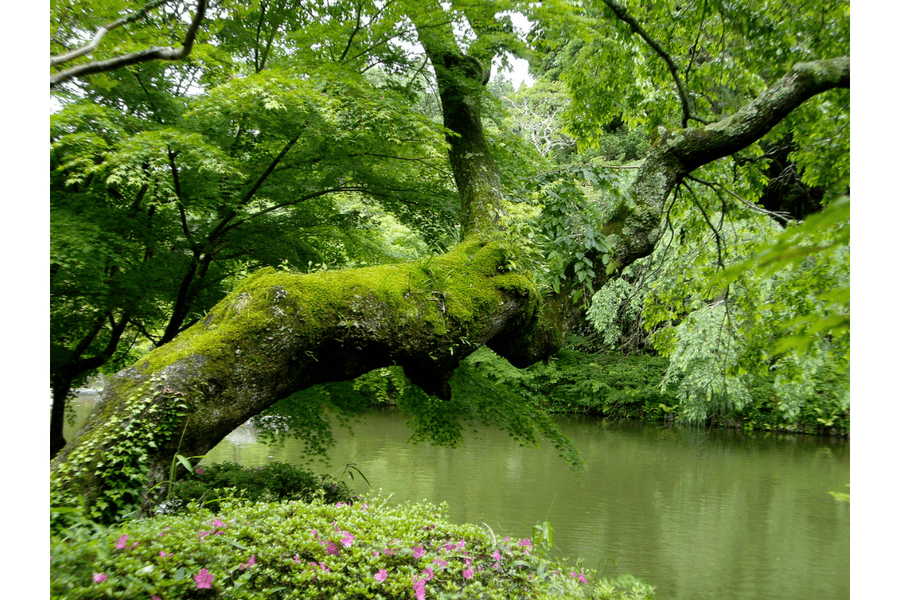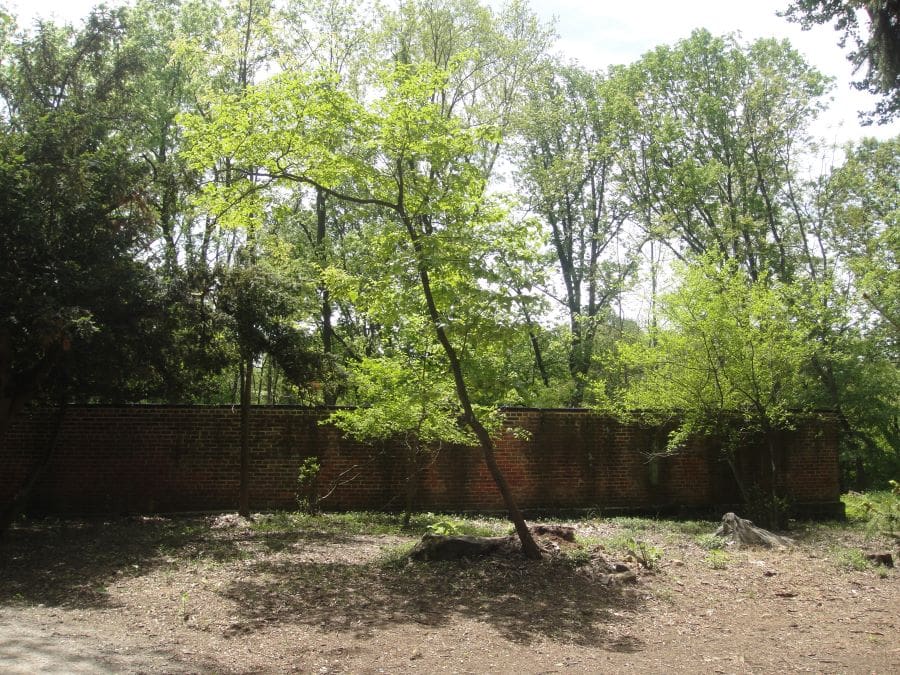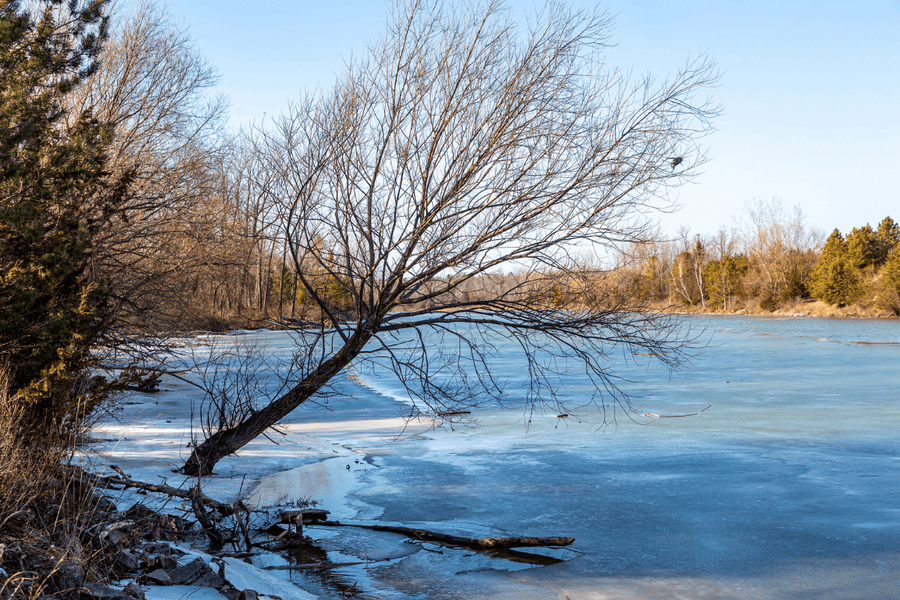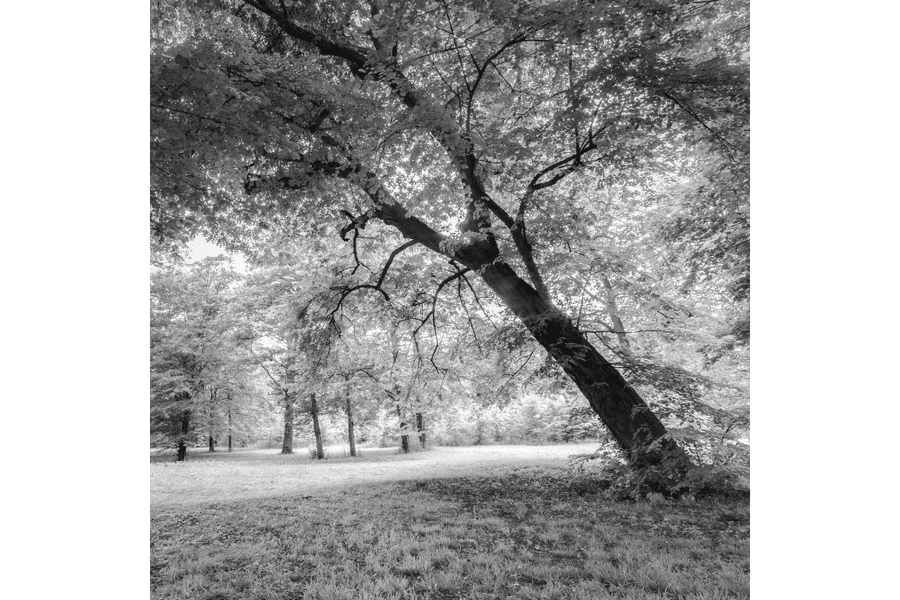One of the many fascinating things about trees is the unique way each tree grows and adapts to its environment. Most trees spend their life in one spot and must weather everything that comes their way. By looking at a tree’s structure, we get a glance into its life history. While it is not uncommon to see trees that curve or bend in a whimsical fashion, it is beneficial to know when a leaning tree has become dangerous.
Trees that lean out of character from their natural straight growth pattern can be picturesque and fun for kids to climb. Or for some, leaning trees can also be an eyesore. You may be wondering if your tree has been damaged or if its health is at risk. If you’re thinking “Is my leaning tree dangerous?”, take a look at these possible reasons you have a leaning tree.

Are Leaning Trees Dangerous or Unstable?
Good news – not all angled trees are dangerous. Due to a process known as phototropism, it is natural for trees to adapt their growth toward light sources. On the other hand, a lean that isn’t caused by a tree’s natural growth process can quickly become a hazard. If a tree has a sudden change in orientation, that is an indicator that something is going wrong and the tree may be unstable. If the tree is leaning toward a structure, such as a house, or overhanging a sidewalk then it is vital to act quickly to avoid an accident.

4 Common Causes of Leaning Trees
So, what leads to a tree leaning? There are several external factors that can force a tree toward the ground.
1. Root System/Soil
The root system of your tree and the structure of the soil in which it is planted greatly affect your tree’s structural integrity. Trees with short root systems require soil that will hold on tight to alleviate the chance of being uprooted. More extended root systems on trees will help keep your tree in place in a mutualistic relationship with the soil. The soil gives the roots something to hold on to while the roots keep the soil in place. An example of this is the extensive root system of the coco palm that thrives and adapts to sandy soil.
2. Strong Winds
Your leaning tree may be a result of being in the path of strong winds over a long time. Frequent high winds can pummel a tree so hard that the roots begin to pull out of the ground. This can happen in a severe storm and can be dangerous to property and human life. You can prepare for strong winds when you plant trees by making sure the soil is adequate for the root system of the trees you are planting. This is not a guarantee that your tree will never lean or pull out of the ground, but it will go a long way toward the safety of your property and loved ones. Here are some more tips on how to prepare your trees before a storm.
3. Disease
Diseases can be a major factor in leaning trees to the extent that they could fall down, particularly oak trees. For example, fungal decay can strip away the layers of the trunk and the bark. Thus causing the tree to lose the strength to hold itself up. Mushrooms growing on your tree trunk can mean a fungal infection is taking over and affecting your tree’s health.
4. Dangerous or Unsteady Location
Soil that is too soft where your tree is planted can be the culprit causing your tree to lean. Wet, soggy soil that rarely dries or with poor drainage can cause trees to lean without the ability to correct their position. Any ground that is showing signs of erosion is a dangerous place to plant a new tree. On the other hand, older trees could require replanting or removal from the area. Trees that are planted near waterways have a tendency to grow towards the source of nourishment. While this is not dangerous depending on the type of tree and soil, be aware of the potential for leaning trees in this locale.

How to Care for Your Leaning Tree
If you have a tree that is leaning, there are steps your arborist can take to assist the tree back into a stable position.
Cabling: The process of cabling strategically secures the weakened leaning tree to a stable structure, such as stakes or another tree, using cables. This can prevent the tree from leaning or falling further.
Stakes: Sometimes used along with cabling, stakes in the ground can encourage a tree to grow straight. Particularly for young trees stakes can help establish a straight trunk early on. However, many arborists agree that young trees also need time to establish their roots so that they do not depend entirely on the stakes for support as they mature.
Pruning: Pruning a leaning tree won’t get the tree back into place, but it can ease the weight pulling the tree down. By evening out the weight distribution in the canopy, your tree has less to fight against as it tries to remain stable.
Transplanting: Finally, if the reason for a leaning tree is poor soil conditions, then the best solution may be to move the tree entirely. Having a strong foundation is invaluable for a tree’s longevity. If a leaning tree is otherwise healthy, moving it to a stable location can give it a new lease on life!
Prevention: The best way to care for a leaning tree is to prevent it from leaning in the first place! Though we cannot control Mother Nature, we can take some steps to ensure our trees are growing strong and healthy. Having an expert regularly monitoring your trees can be beneficial in noticing issues early on while there is still time to resolve them. Keeping your tree healthy with regular maintenance and care will help it grow strong and can reduce the probability of future issues such as leaning.

Do I Need to Remove a Leaning Tree?
When a tree begins to lean, it is not always a death sentence. Some trees are strong enough to handle the bending, whereas weaker limbs can be stabilized with cabling and young trees can be adjusted with stakes. The only way to truly determine what is best for your tree’s unique situation is to have a certified arborist conduct an assessment and devise a plan. It is possible that the only safe option will be to remove a tree entirely. As a tree preservation company, we never want to see a tree taken down, but we believe in prioritizing safety, which sometimes means removing a hazardous tree.
Consult with an RTEC arborist today
Contact us today at RTEC Tree Care for an extensive consultation for taking care of your leaning tree. We have a team of Certified Arborists who can walk you through the diagnosis and treatment of your tree. Don’t wait until your tree is beyond saving, call us today!
